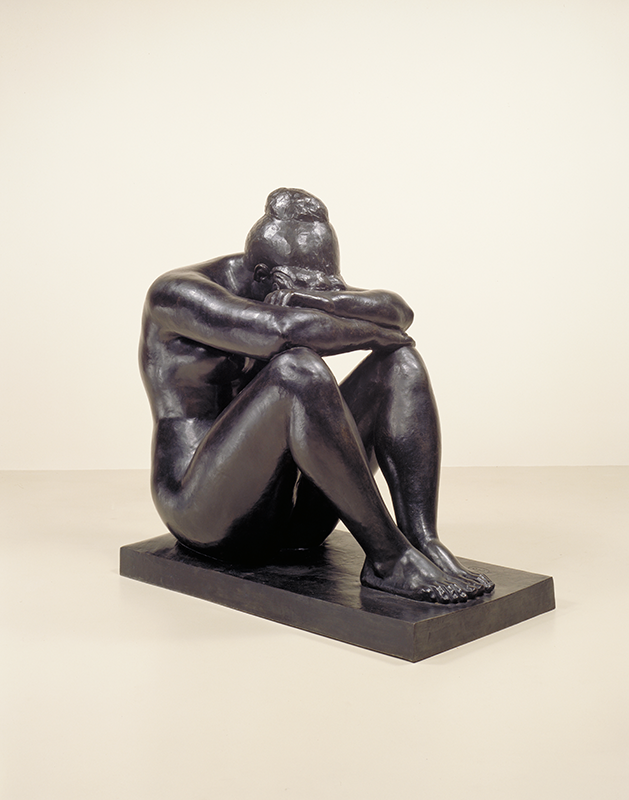Foundations: The Nature of Arp places a group of sculptures by Jean (Hans) Arp in conversation with works from the Nasher Collection.
Almost alone among artists of his generation, Jean (Hans) Arp worked at the forefront of abstraction as well as Dada and Surrealism, and his friendships and participation in collective projects and movements evince a firm belief in international cooperation. Resisting the sectarian currents that fed two world wars, Arp collaborated with a staggering array of artists and writers of widely varying nationalities, and his congeniality and enthusiasm for modern art made him a conduit for its leading concepts and a frequent point of reference for many of his contemporaries.
Arp’s embrace of plaster as a sculptural medium was partly inspired by the innovations of Auguste Rodin, whose studio Arp visited around 1911: Rodin’s studio held multiple casts of his works, which he often split apart and recombined—a practice Arp was also to adopt. As a young artist, Arp was also taken with Aristide Maillol’s quiet, grounded classicism, the sinuous curves of Henri Matisse’s nudes, and Constantin Brancusi’s focus on the concentrated essence of forms.
When Arp took up sculpture in the round around 1930, his new direction coincided with a broader renewal of engagement with sculpture, especially among the Surrealists. Arp’s friends Alexander Calder, Max Ernst, and Joan Miró made sculptures that shared strong affinities with Arp’s vocabulary of curving, organic shapes, and in 1930 Pablo Picasso established a sculpture studio at Boisgeloup, outside Paris. In England, Barbara Hepworth, who was deeply moved by a visit to Arp’s studio in 1933, and Henry Moore also developed styles that a contemporary British critic christened “biomorphic,” a term since applied routinely to the fluid ovals and amoeboid forms pioneered by Arp.
Arp’s impact on his fellow artists surpassed influences based on the use of a shared visual language to encompass concepts that radically redefined the practice of sculpture. His fascination with processes of growth and with nature’s animate, effortless unity despite its ceaseless variety led him to pioneer works that challenged conventional concepts of composition and finish, and his experiments with chance, introduction of absurdity and humor into the realm of ambitious works of art, and exploration of a horizontal mode of sculpture freed from the pedestal provided important precedents for artists as varied as Dorothy Dehner, Donald Judd, Ellsworth Kelly, and Claes Oldenburg.
Price
- $3-$10
Box Office
- 214.242.5100






COMMENTS